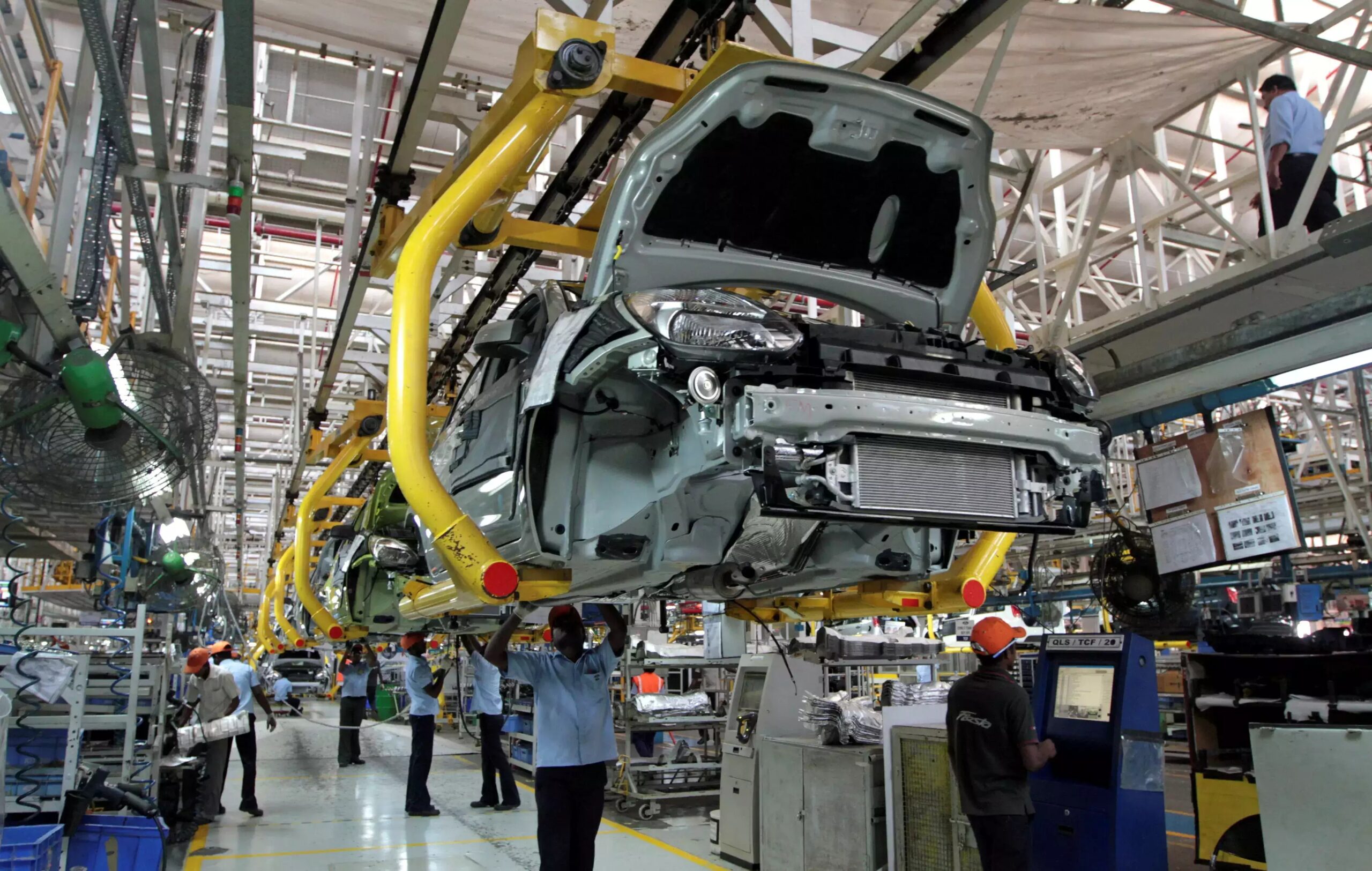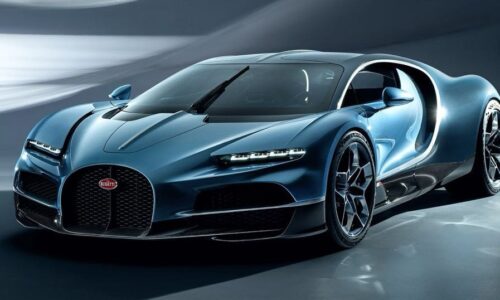- Judith Akatugba
- 0 Comments
- 782 Views
Is Nigeria developed enough to support a car industry of its own? No, is the response. The nation must be able to generate at least 85% of the components domestically in order to manufacture cars. Automobiles are made from a variety of materials. These include aluminum, glass, polymer (used in plastics and fiber-reinforced composites, rubber, and textile fibers), iron (used to make steel), and glass. Metal alloys were the norm until the past 50 years, when the car industry became interested in plastic materials because of their low fuel consumption, long shelf life, and lightweight nature. Alloys made of metal are heavy and prone to corrosion, dents, and dings.
Read Also: 15 Success Strategies for New Real Estate Agents
Polymer plays a big part in the car production process. Plastics, rubbers, fiber-reinforced composites, foams, and textiles are all made of polymer. Examples of applications for polymer include tires for automobiles, which are made of rubber; textiles are used to make seat belts and seats. Thermoset or thermoplastic polymeric materials can be used in automotive applications. Natural rubber is a raw material used in thermoset resins (for tires and a mixture that includes thermoplastic for bumpers). Polyvinyl chloride is utilized for pipes, doors, the sheathing of electrical cables, instrument panels, and gas cans; polyurethane is used for bumpers and other automotive uses. Styrene butadiene acrylonitrile for dashboards, wheel covers, and body pieces. Polyamide 6 and 66 (also known as nylon 6 and 66) is used for weatherproof coatings, gears, bushes, cams, and bearings. Polystyrene for equipment housing and auto parts. Polyoxymethylene for small gears, fuel system, and exterior and interior trims. Headlamp lenses and bumpers are made of polycarbonate. Polymethylmethacrylate is used in screens and windows. Door handles, bumpers, and carburetor parts are made of polybutylene terephthalate; gear housing, headlight retainer, engine cover, and connection housing are made of polyethylene terephthalate. Acrylonitrile styrene acrylate is used for housings, profiles, and interior parts. It is more robust and rigid than acrylonitrile butadiene styrene. These are engineering polymers, all of them. Polyolefins, such as high impact polyethylene and polypropylene, are commodity polymers that are employed. Although Nigeria does not make engineering polymers, it does produce polyolefins, which are used sparingly, through the Nigerian National Petroleum Corporation. Nigeria is an assembler rather than a producer if it only produces less than 5% of automotive components.
Different plastic components, including as windshields and bumpers, have distinct safety functions and are considered safe. All throughout the world, airbags and polyester seat belts have saved countless lives. In the case of a rollover, the roof structure is strengthened when plastic foam is inserted into roof supports. The impact of a collision is absorbed by the polyethylene foam found inside door panels and the front and rear bumpers. This is in addition to mixtures in which thermoplastic polymers and elastomeric material are combined. Research has demonstrated that lowering a car’s weight above its center of gravity can improve the vehicle’s resistance to rollover. Plastics are the only material that can be used to do this. The translucent, shatter-resistant polycarbonate headlamp lenses have been improved. Nowadays, most cars have plastic gasoline tanks since they are lightweight, don’t have welded seams, and are less prone to split in an accident. This fuel tank was made by a technology called co-extrusion. Another significant benefit of employing polymeric materials is fuel economy. Currently, just 14% of an automobile’s components are made of plastic; however, this number rises to almost 30% when other polymeric materials such as tires, textiles, and elastomers are included. It is projected that by 2020, around 75% of the materials found in an ordinary car will be polymeric.
The automotive industry is now conducting research in the field of fuel efficiency. Automakers must attain a fuel efficiency of more than 50 miles per gallon by 2025 in order to comply with the National Highway Traffic Safety Administration’s Corporate Average Fuel Economy guidelines in the United States. Plastics are a material that automakers constantly turn to in order to do this. Thus, a vehicle’s fuel usage decreases with its weight. The aerospace sector is a prime example, as the majority of its components are made of fiber-reinforced composites. General Motors, an American company, is worried about its passenger cars’ CAFÉ ratings. GM stated that its CAFÉ rating would have been as follows if the sales mix of its cars had been the same as that of its main Japanese rivals: GM and Honda hybrid, 31.6 mpg versus 30 mpg for Honda. GM’s combined fuel economy with Nissan and Toyota is 29.4 and 28.4, respectively, and 30.3 and 30.6 mpg, respectively. In reality, GM received 27.1 mpg.
Given the foregoing, is Nigeria a nation that produces cars? I suppose all we are doing is putting different cars together with parts that were made somewhere else. If the Volkswagen and Peugeot assembly factories had remained open, Nigeria may have been a global leader in the vehicle manufacturing industry. The Proton automobile from Malaysia is a prime example. In 1983, Dr. Mahatiar Mohammed, the country’s prime minister at the time, proposed the concept of establishing auto factories. The Japanese company Mitsubishi Motor Corporation and the Malaysian government cooperated. The engine was provided by Mitsubishi. Every other component, such as polymeric materials, steel, and aluminum, was produced locally. On July 29, 1985, the first Proton Saga powered by the Mitsubishi Orion 4G13 was released. Because the engine is now produced locally, Mitsubishi is no longer supplying it owing to innovation and technological improvement. There are now a number of Proton models available that may rival the greatest in the world. When I was a Professor Madya at the Universiti Sains Malaysia, Penang, in 1996, I drove a Proton Saga for the first time.
After Malaysia’s automobile industry was established, the country’s economy flourished and the cost of buying a car dropped precipitously to less than 50%. In roughly twelve South East Asian countries, proton is present. The Center for Automobile Research in Ann Arbor, Michigan, asserts that since mobility is closely associated with prosperity, the production of automobiles is essential to a robust economy. Only Saudi Arabia is devoid of an auto manufacturing facility among the Group of 20 nations, which also includes the United States, Canada, Australia, Brazil, Russia, Mexico, Turkey, Saudi Arabia, South Africa, Indonesia, South Korea, Argentina, and the European Community.
Nigerian products are now entirely Chinese-made. The Guardian Newspaper reported on December 23, 2016, that GAC Motor, a well-known Chinese automaker, has introduced the GS4, the best-selling Sports Utility Vehicle in the Nigerian market. Dignitaries attended the unveiling in Lagos, including the state government representatives and Rilwan Akiolu, the Oba of Lagos. For what length of time will things stay this way? Nigeria is rife with gifted people who can accomplish great things. What about the private sectors if the politicians have no interest in seeing this nation’s car industry grow?
Regards from Nnewi, Anambra State’s Innoson Motors. The company claims that 70% of the components are manufactured domestically, with the other components coming from China, Germany, and Japan. To guarantee that over 85% of the components are produced locally, the government ought to assist this business.
As a result, the business can expand and Nigerians would be able to purchase automobiles built in Nigeria for less money. Tokunbo automobiles are buried in Nigeria but already dead in the nations where they were manufactured. Bravo to Innoson for paving the route for progress. In the majority of developed nations, the automotive sector employs over 15% of the labor force. Constantine Biller recently discussed how the automotive sector can help revive global economic growth in Automotive World magazine (June 17, 2014). He cited Volkswagen’s recent announcement that it will invest $7 billion in the North American auto industry over the next five years, a move that demonstrates the strength of the global automatic market.
If the Volkswagen Assembly Plant in Nigeria is still running, as it most likely is, it has likely evolved into a manufacturing facility where over 80% of the parts are sourced locally. Nigeria is developed enough to produce WAZOBIA cars on its own. Why not Nigeria, if some developing countries can manage it? Nowhere in the world has as many automobiles per 1000 inhabitants as Western Europe. The top five countries on the list are Italy (591), Germany (500), Japan (475), the USA (463), China (58), and India (18). It can be fewer than 10 per 1000 in Nigeria.











